Kryvyi – Rih – that is pure industry, one would think. The city of iron mines does not have the best reputation, even in Ukraine. Many residents of Kryvyi Rih also want to leave, and so the population has been shrinking for years. But anyone who thinks that this industrial city is a moloch and has nothing to offer tourists is very much mistaken. Because in addition to the mines and ironworks, there are some special sights in Kryvyi Rih, which is called Krivoy Rog in Russian and is often still known by this name abroad.
The Banner of Krivoy Rog – Soviet propaganda and real history
Kryvyi Rih was for someone born in the GDR and even as someone who grew up in East Germany after the fall of the Wall still a well-known name. However, not under the Ukrainian name, but under the Russian one Krivoy Rog. I come from the Mansfeld region in East Germany and one of the most famous propaganda myths from GDR times was about the flag of Krivoy Rog. Before the war, the Mansfeld miners went on strike against exploitation by the operators of the Mansfeld Mining Corporation. Miners from the then Soviet Union from a mine in Krivoy Rog sent some food and a flag from the Krivoy Rog CPSU in 1929 to show their solidarity with the striking Mansfeld comrades.
One of the comrades hid the flag from the Nazis during the Third Reich. In 1945, when the region was handed over to the Soviets by the Americans according to the decisions of the Yalta Conference, he went to meet the Soviet soldiers with the Banner of Krivoy Rog. The story was written down by the communist and resistance fighter Otto Gotsche and was made a film by the well-known GDR director Kurt Maetzig in 1967. The film “The Banner of Krivoy Rog” starred Erwin Geschonnek, Manfred Krug and Eva-Maria Hagen, among others. In the GDR, the memory of this gesture was also used as propaganda for German-Soviet friendship. Even today, the Banner of Krivoy Rog is therefore still remembered by many former GDR citizens.
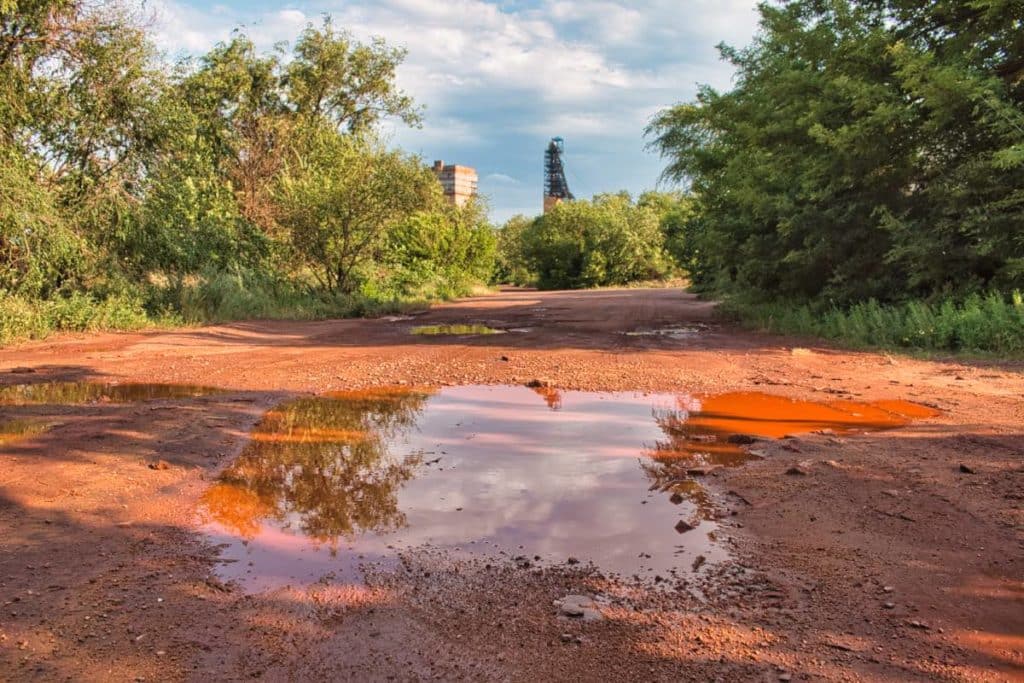
The 10 most beautiful sights in Kryvyi Rih
Anyone who has heard anything at all about Kryvyi Rih will probably expect nothing but industry. But that’s far from the truth! Because in Kryvyi Rih there are at least as many sights of nature and landscape. I think that makes the city one of the most diverse cities in Ukraine. But read for yourself!
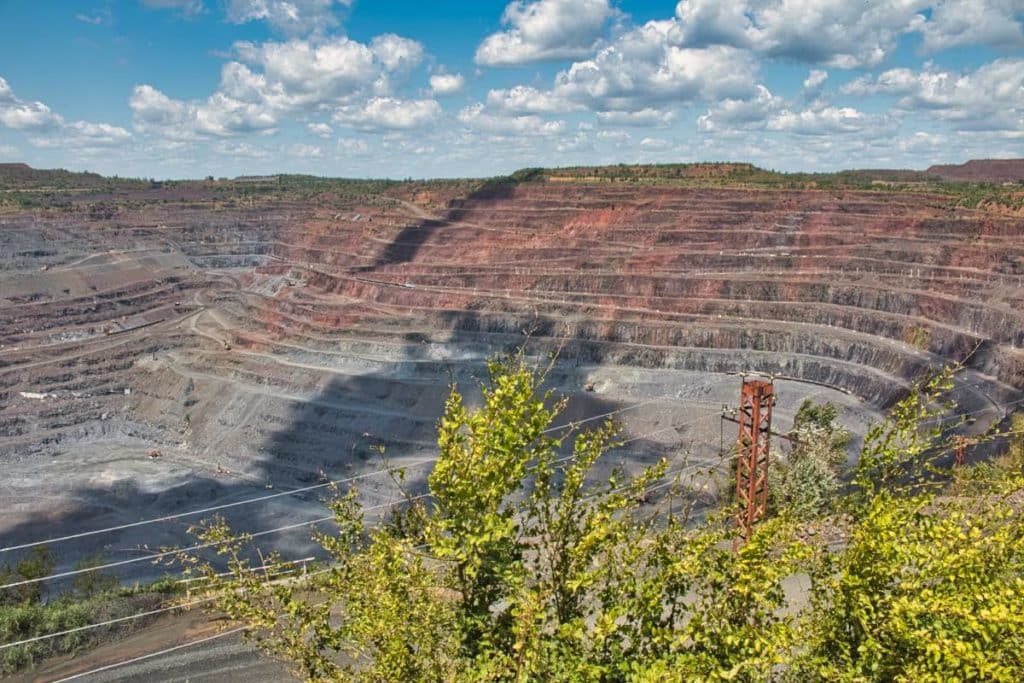
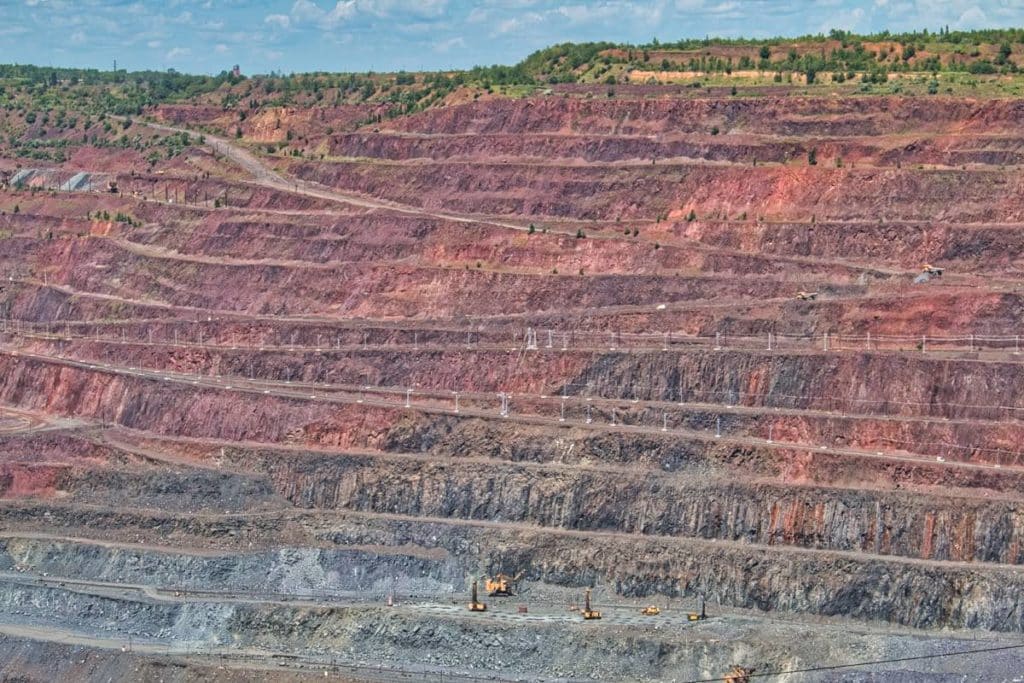
Iron Ore Mine
Iron ore is also mined above ground in Kryvyi Rih. A quarry covering 570 hectares (around 800 soccer fields), is gradually eating its way deeper and deeper into the ground. The hole is now 404 meters deep and more than three kilometers (almost 2 miles) wide. I would love to see this from the air. If you visit the town with a local guide, you can book a tour into the quarry. If you want, you can even drive down into the mine and see the huge mining trucks up close, their wheels alone are the size of a single family home. However, both tours must be organized in advance.

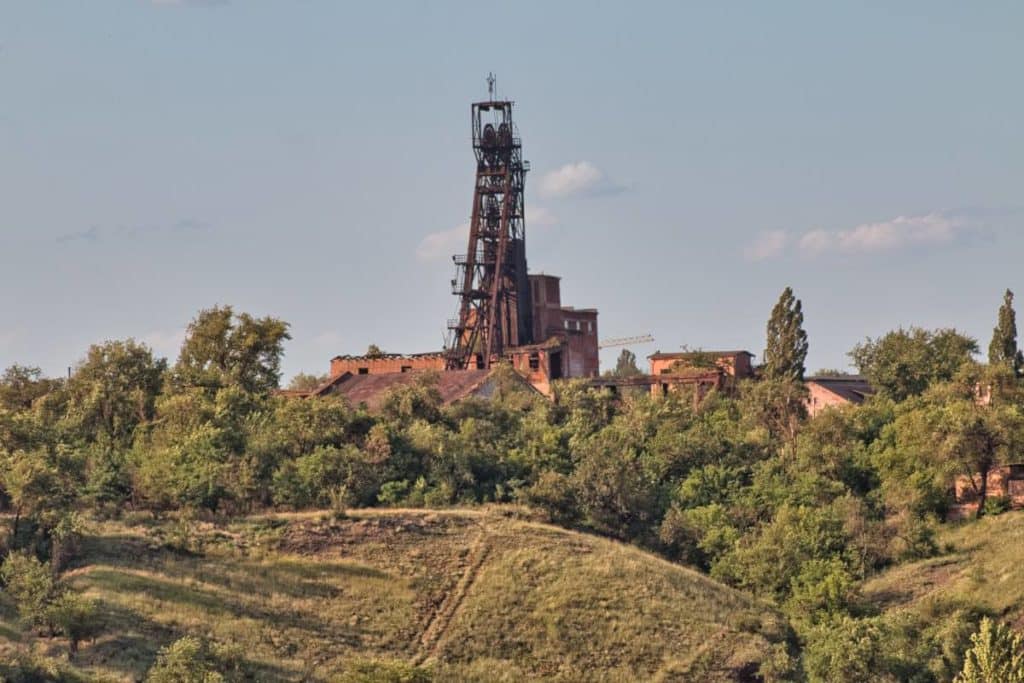

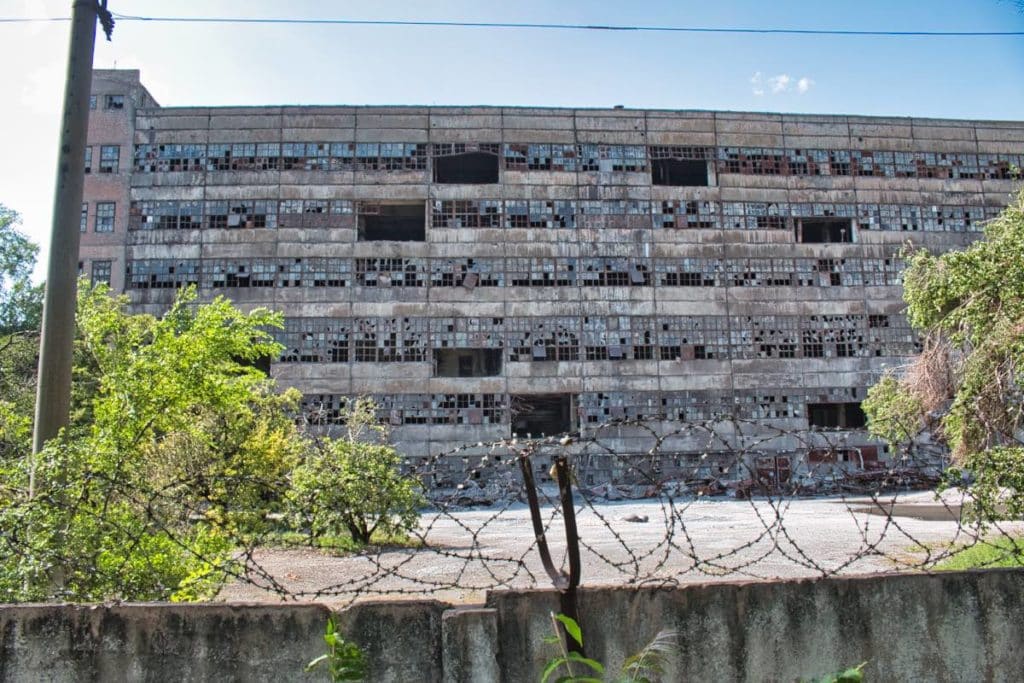
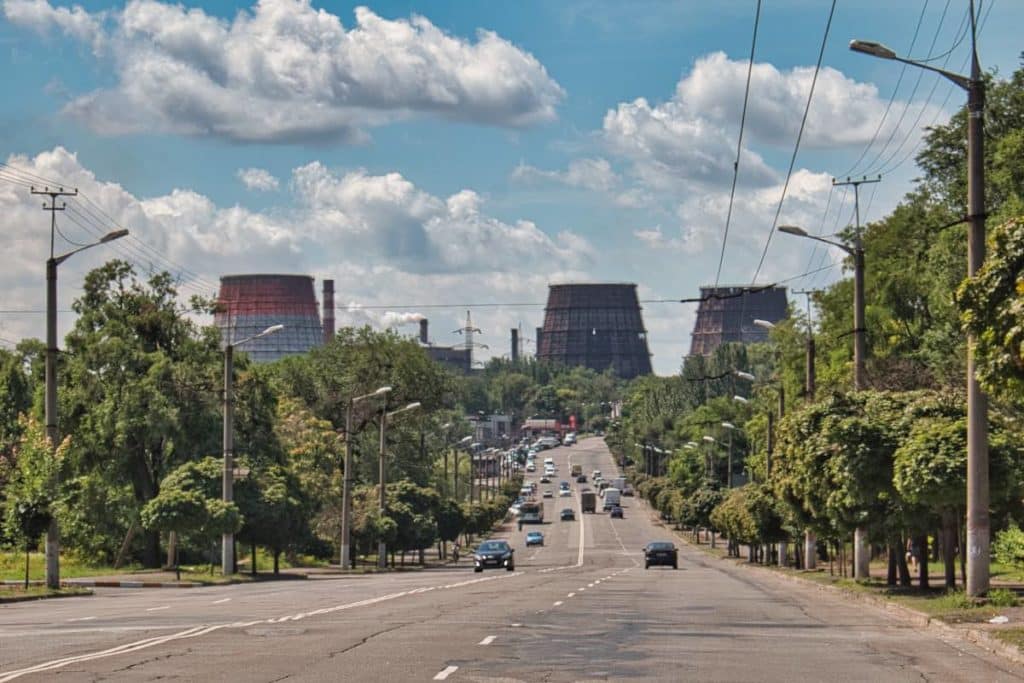
Mines, smelters and industrial culture
Besides the huge quarry there are also dozens of mines. There are winding towers everywhere, visible signs pointing to the shafts. For me, as someone from a mining region, this is a familiar image. Kryvyi Rih is also the seat of the KryvyiRihStal, which is the largest and most modern steel producer in Ukraine. Therefore, throughout the city there are still plants involved in steel production. Accordingly, the smell is not always pleasant and many residents of Kryvyi Rih complain about the heavy air pollution in the city. But almost two thirds of the inhabitants work in the industrial plants, which together produce 85% of Ukrainian steel.
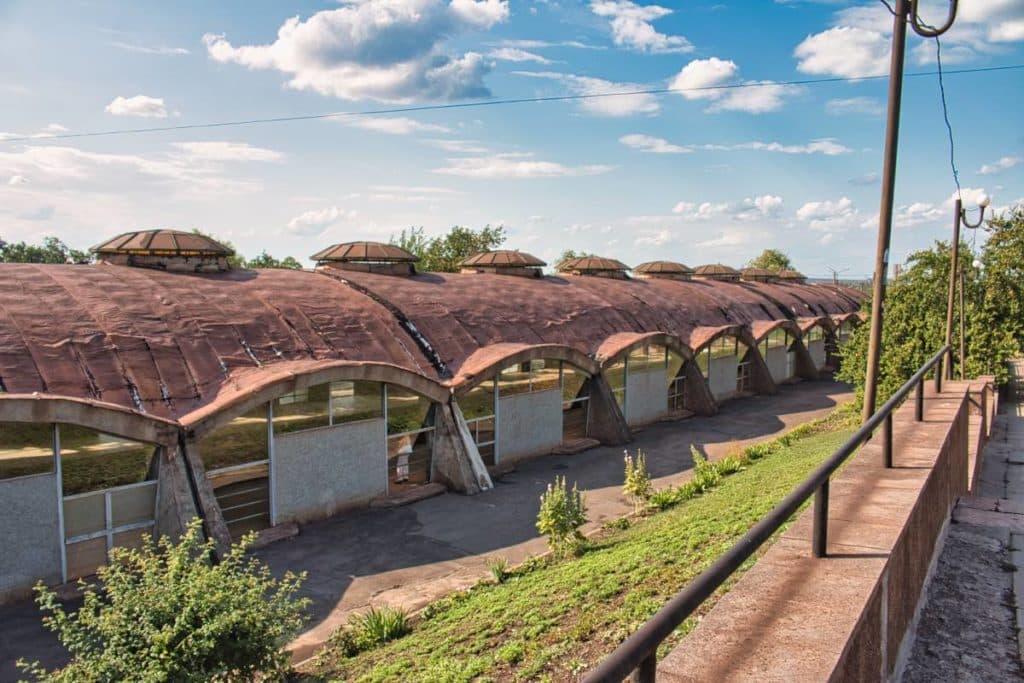

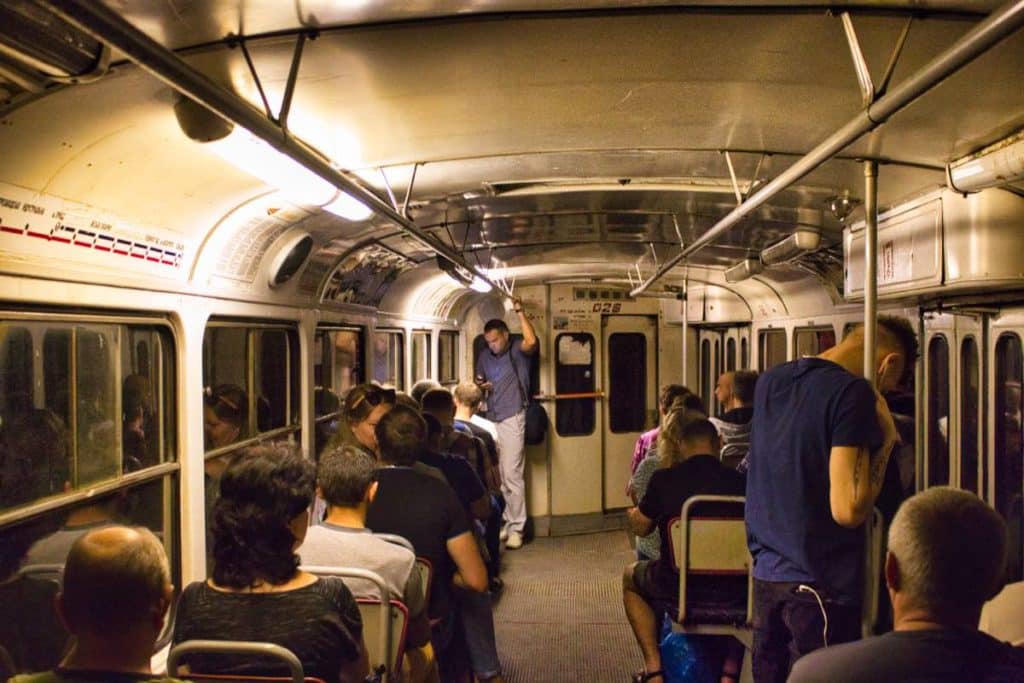
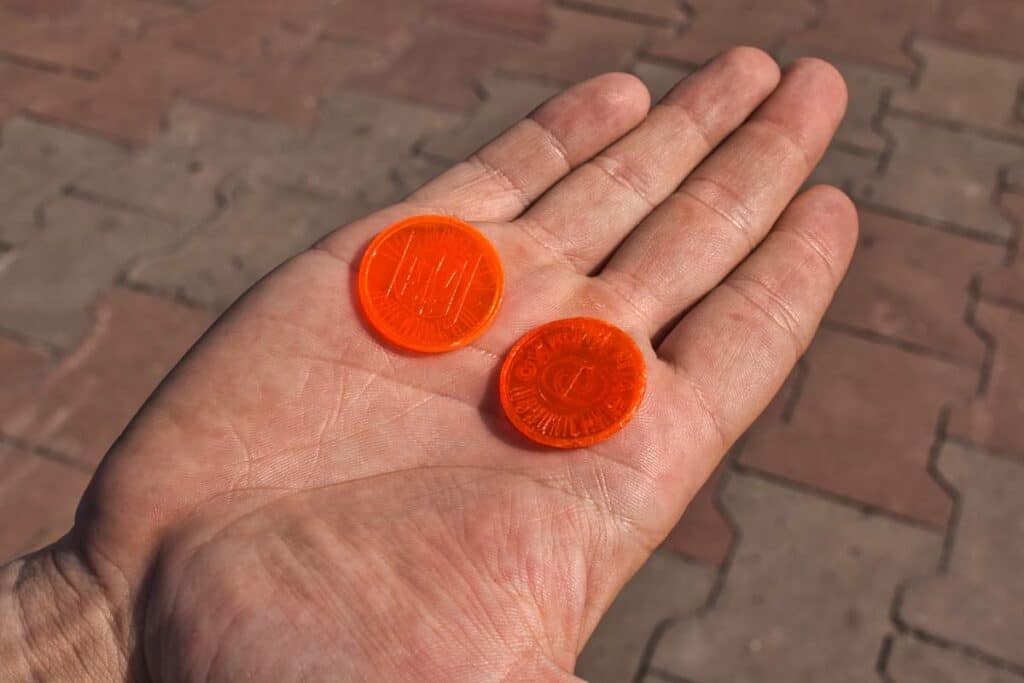
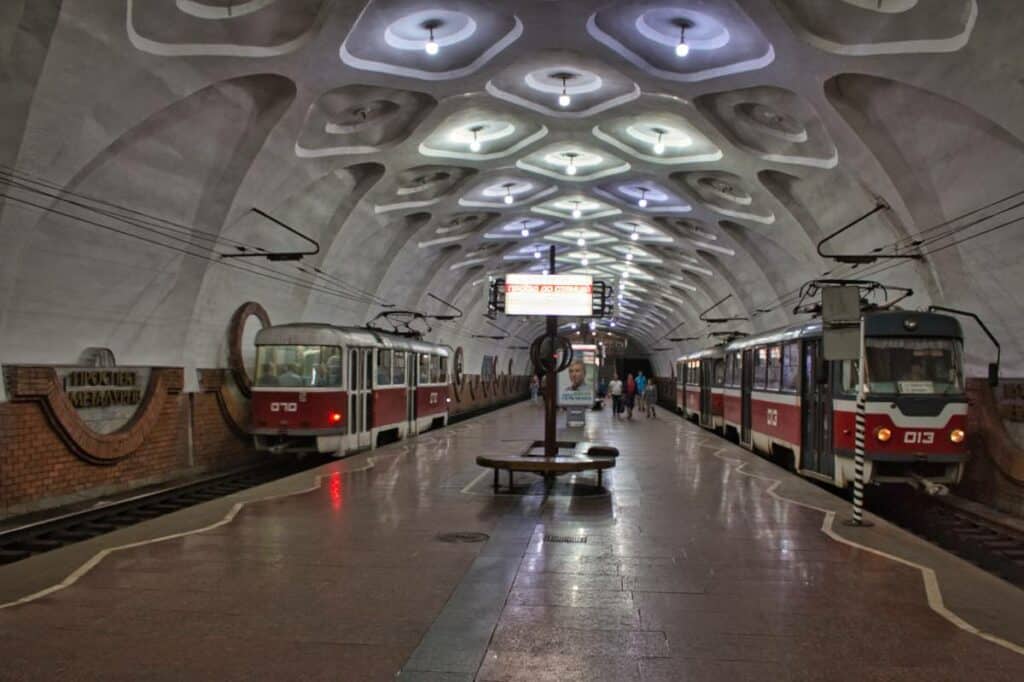
Metrotram
Together with the Volgograd Metrotram, the Kryvyi Rih Metrotram is unique in Eastern Europe. This is because the city of Kryvyi Rih was originally supposed to get a complete metro. The tramway was to serve only as a provisional solution. The first section was opened as early as 1986. Four stations are actually underground. They also look like metro stations. I find the most beautiful station here is Mudryona, which looks like a submerged submarine and functions as a transition station into the tunnel. It is not underground, but it looks like it, and the tunnel of the Kryvyi Rih metrotram starts here.
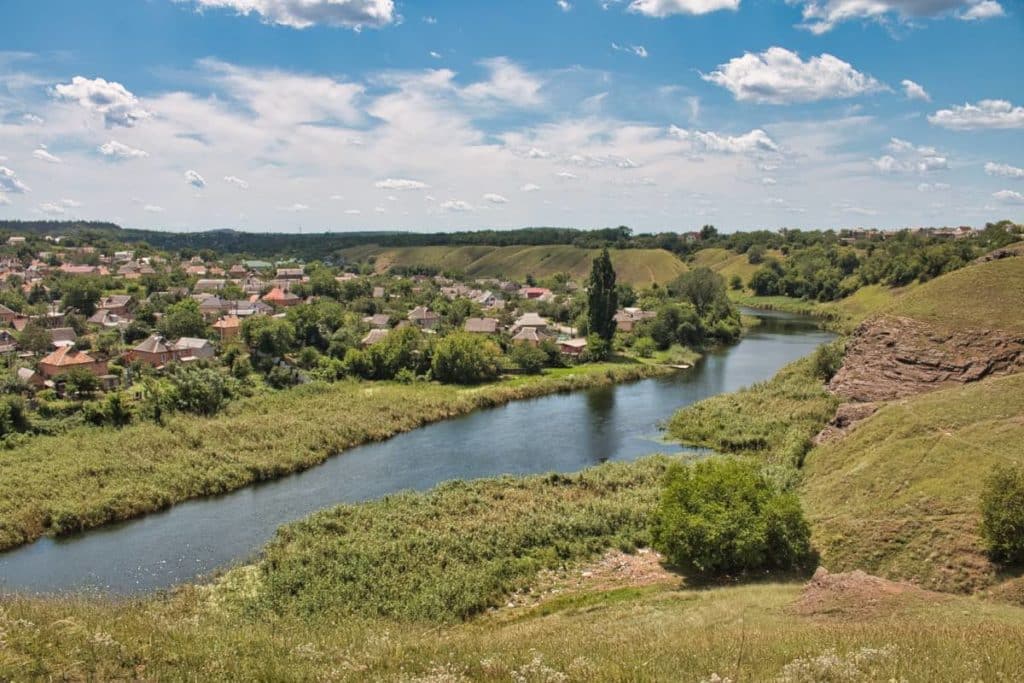
Inhulets Valley and MODR Rocks
Kryvyi Rih means the Crooked Horn. There are several legends why it is called so. One says that a cossack lived here, called Horn, who could not walk quite straight. But he was lovable and so many travelers who passed by here visited him. In 1781, when the naturalist Vasily Fedorovich Suev investigated the area, he found a high concentration of iron ore in the rocks. He is said to have made the discoveries in the valley of the Inhulets. Historians suppose that it should have been at the MODR rocks. From here you will have an unexpected view of Kryvyi Rih, because the area is very quiet and green. Here you can have a picnic and enjoy the panorama. There are only a few boats on the river from time to time.
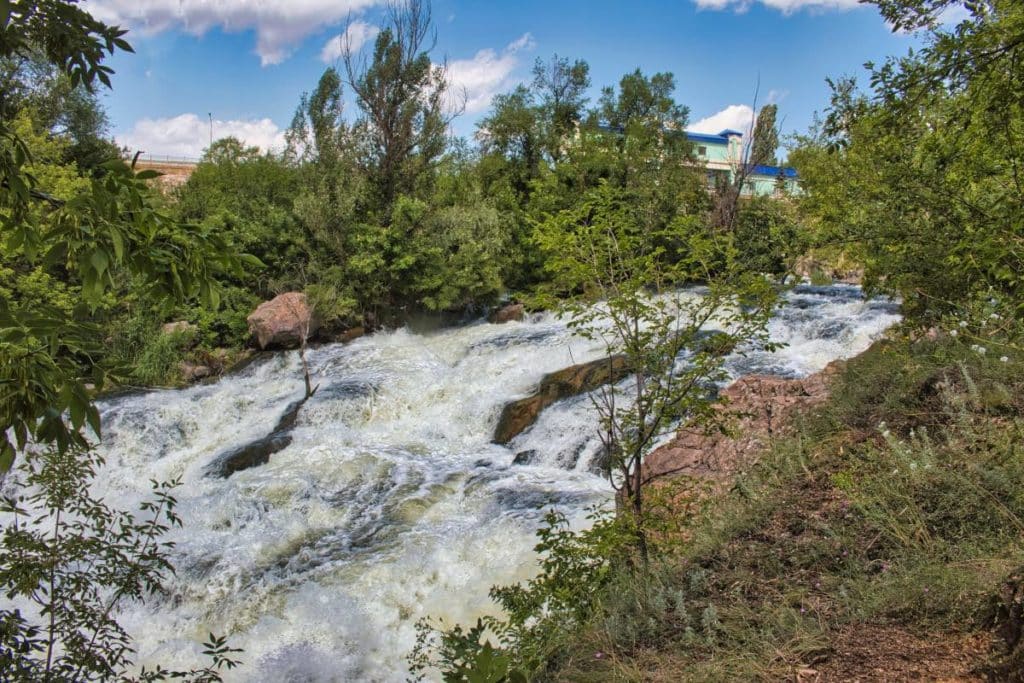
Waterfall and rapids
A real specialty in Kryvyi Rih is the 12-meter-high White Rock waterfall. It is located directly below the Karachunivka dam. From the culvert on the dam wall, the stream flows along the rapids only since the construction of the dam in 1932 and also passes the waterfall. The reservoir is the drinking water supply of the city and a recreational area.
Nearby is also the railroad bridge, over which you can walk. It is 53 meters high and 161 meters long. It dates back to the 19th century and is the highest bridge in the whole Kryvbas.
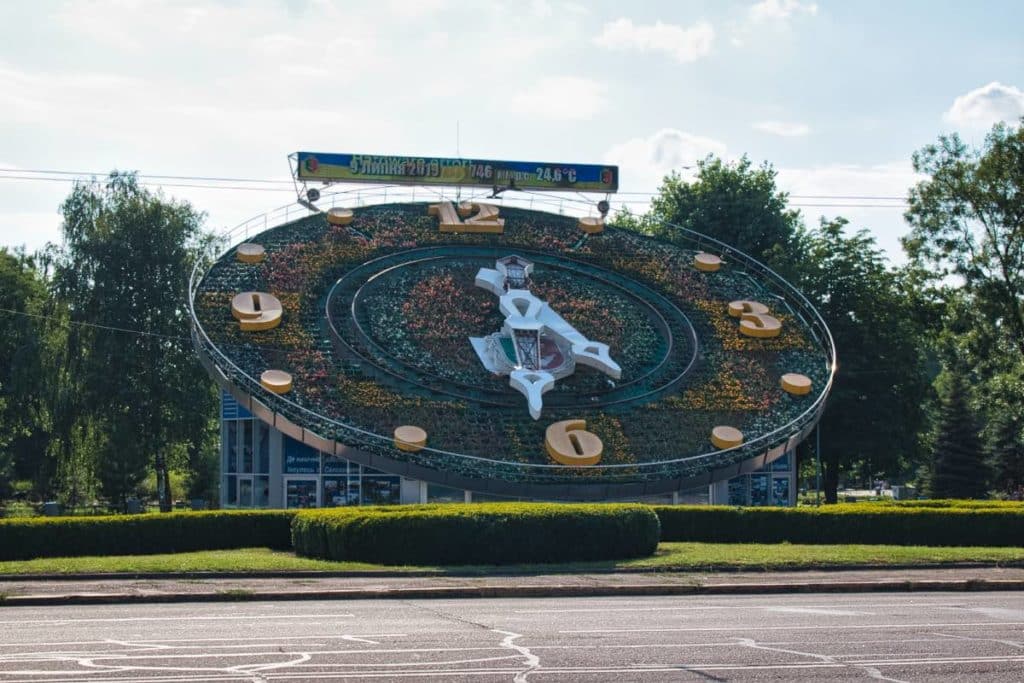
Kryvyi Rih flower clock
If you come to the city in summer, which I strongly recommend you to do already because of the lake and the river, you can also see one of the wonders of Kryvyi Rih: the flower clock. There are such flower clocks in many former Soviet cities. Lviv also has a flower clock. However, the flower clock of Kryvyi Rih is said to be the largest flower clock in the world. It has a diameter of 22 meters and is decorated by more than 22,000 flowers.
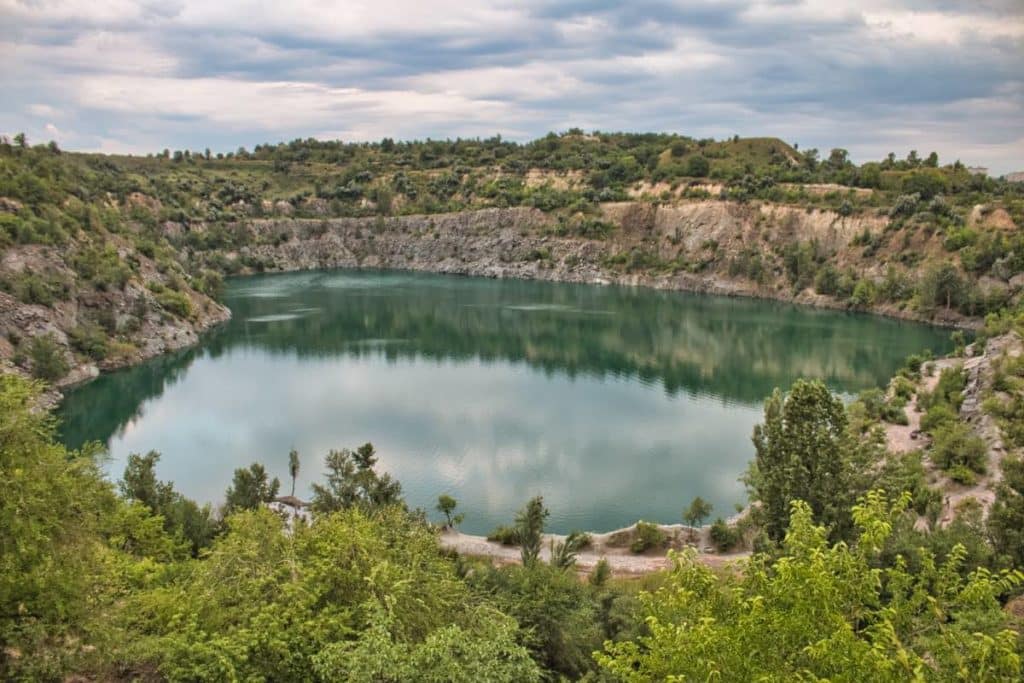
Abandoned quarry with a lake
My guide Volodymyr also took me to another real gem. It is the granite quarry “October”, which was created at the end of the 19th century and operated until after the October Revolution. Initially, it then was abandoned for a few years, but after the Second World War it was mined again. At that time, the Soviets forced German prisoners of war to do the work. There is even a cemetery of the Germans not far from it. In 1960 the granite quarry was abandoned and the renaturation process began. In the meantime, the quarry is also a recreational area, where in summer the inhabitants of Kryvyi Rih go swimming.
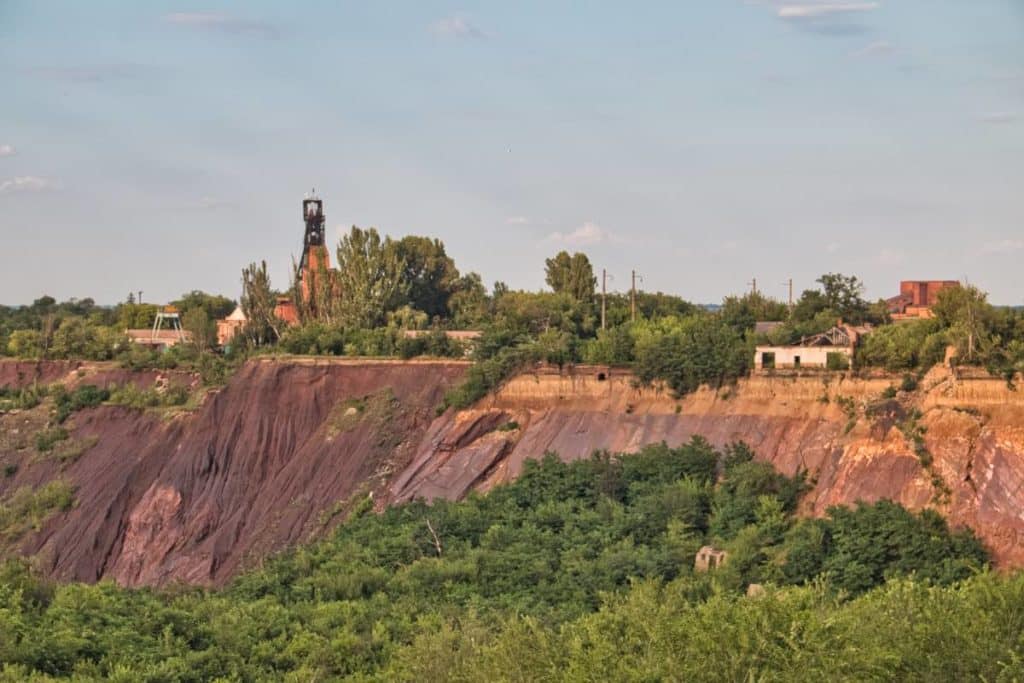
Landslide crater from blasting at Ordzhonikidze mine
What happens when mining is carried on at such a speed, without paying attention to the nature of the surroundings, you can also see in Kryvyi Rih. For example, on June 13, 2010, there was a controlled blast at the Grigory Konstantinovich Ordzhonikidze mine. But what the blasters did not know: There were huge cavities in the vicinity, which then collapsed during the blasting and tore down 16 hectares of land. In the process, a driver of a mine, who was taking a break in a parking lot, was killed.

Fortunately, the area was uninhabited and only a few dilapidated houses were damaged. However, as my guide Volodymyr told me, he knows the inhabitant of a house that stands only 300 meters from the crater rim. He said that when the blasting was carried out, his whole house shook and he is still afraid to this day. The sinkhole is up to 40 meters deep, and a road was partially buried. The area was initially sealed off after the disaster. Today it is largely open and you can walk along the crater rim. And don’t worry: geologists have determined that the area is now stable. So you don’t have to get buried in Kryvyi Rih 🙂
Chervona Balka Pivnichna Landscape Reserve
Another unexpected green place is the Chervona Balka Pivnichna Landscape Reserve. It was put under protection already in Soviet times, because a unique biodiversity for the Kryvbas can be found here. 360 plant species thrive here, eight of which are on the Red List. The area is also a paradise for insects, birds and amphibians of all kinds. On the rocks you can sometimes see how ferruginous the rock of the region is.
Botanical Garden
The protected landscape area was designated by employees of the Kryvyi Rih Botanical Garden. Originally a branch of the Donetsk Botanical Garden, several hundred species of plants grow here on 52 hectares. Here, too, it is worth taking a walk and discovering this gem in the middle of the city.

No Kryvyi Rih attraction so far: Parental home of President Volodymyr Zelenskyi
Not yet a place of pilgrimage is the parental home of President Volodymyr Zelenskyi. The comedian was elected to office in 2019 with an overwhelming majority. In the meantime, however, he has lost some of his popularity. That’s why there is little interest in his childhood home in Kryvyi Rih. The Soviet-era apartment block is typical of the socialist housing of the time. His father was a professor at a local university. By the way, Zelenskyi named his production company after the 95th quarter, a city district, in Kryvyi Rih.
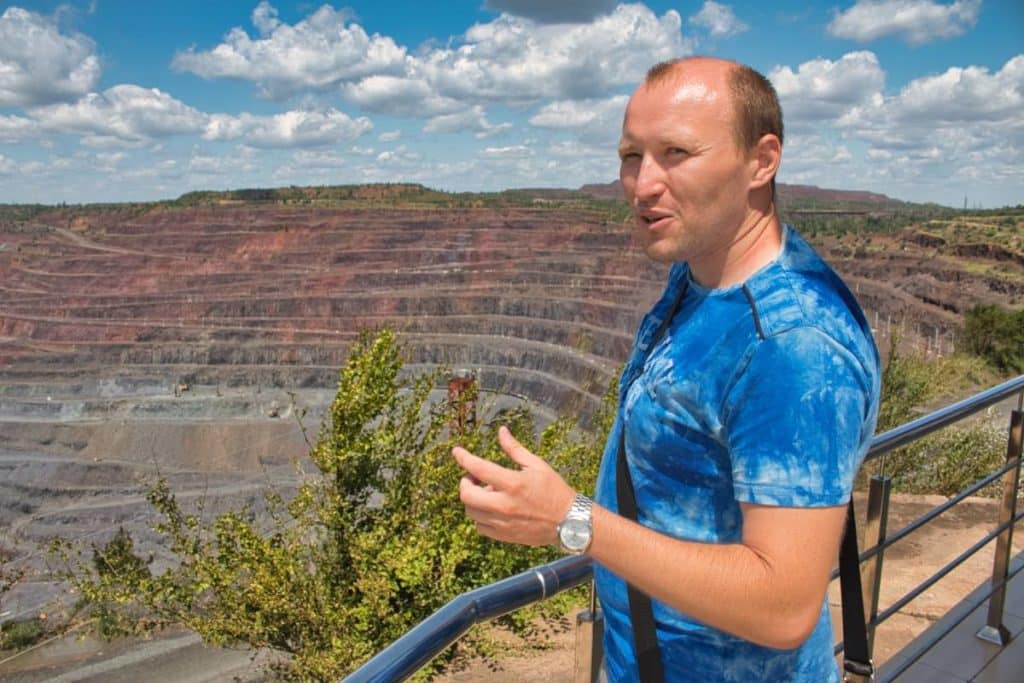
Guided tours in Kryvyi Rih
Kryvyi Rih stretches for several dozen kilometers. And in the city there are many secret places that only the locals know and will find. Therefore, I was lucky enough to book a guide who is a real local and on fire for his hometown. So if you are in Kryvyi Rih, I can highly recommend my guide Volodymyr Murashkin. He guided me professionally through the city and knew a lot of interesting stories. He speaks fluent English, Ukrainian and Russian.


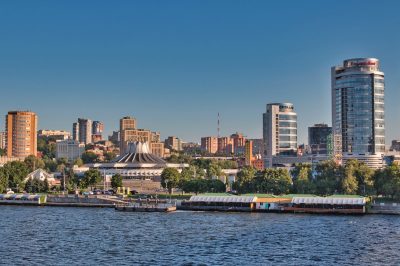
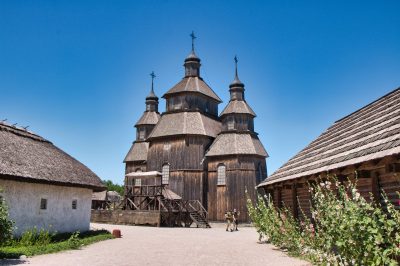
Cool article, Peter!
Really useful article 👌